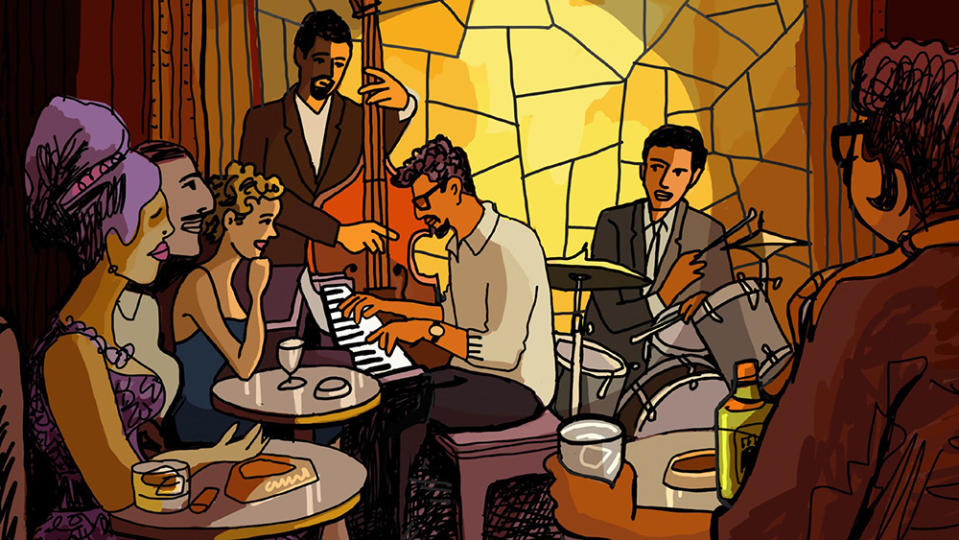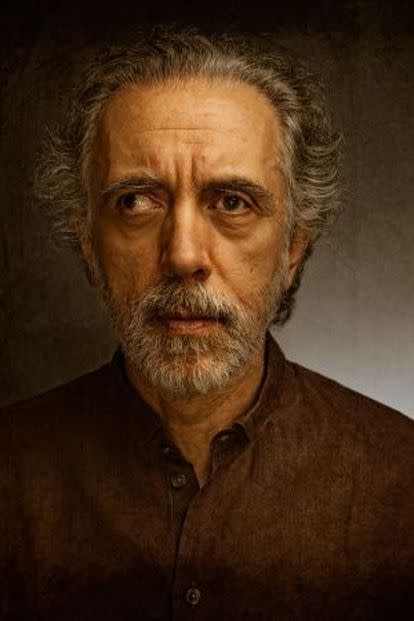‘They Shot the Piano Player’: the Joy of Bossa Nova, and the Tragedy of Latin America
- Oops!Something went wrong.Please try again later.
- Oops!Something went wrong.Please try again later.
- Oops!Something went wrong.Please try again later.
- Oops!Something went wrong.Please try again later.

They were all so incredibly young. Caetano Veloso opened Salvador’s Vila Velha Theater, a milestone event for the city, at the age of 21. Pianist Francisco Tenório Jr., the subject of Fernando Trueba and Javier Mariscal’s “They Shot the Piano Player,” recorded one record as band leader, in March 1964, when he was 23 years old.
But he played piano on some of the greatest samba jazz records of all time, some with Raul de Sousa on trombone and J.T. Meirelles on tenor sax.
More from Variety
“These guys were the geniuses of Brazil music and they were only 23 years old,” Oscar winning writer-director Fernando Trueba (“Belle Epoque”) told Variety at Annecy.
If Tenório isn’t better known, it is partly because he was murdered, “desaparecido,” in 1976 in Argentina while on tour, a full life suddenly annulled at the age of 35, as a military coup d’etat took hold of the country.
Nobody asked the Argentine police to investigate his death, given they were part of the forces of order who had killed him, Spanish writer-director Fernando Trueba remarked on stage at Annecy this week, where “They Shot the Piano Player” was unveiled as a Work in Progress.
Decades later, Trueba’s interview with Tenório Jr.’s widow, Carmen – for what was then conceived as a documentary on Tenório – was the first interview she had ever been asked to give.
The history of Latin America is so often one of defeat. “They Shot the Piano Player” tries to get to the truth on multiple levels. Who was Tenorio Jr? Why did he die? What was his music?
Doing so, its pitch promises, the animated feature captures a fleeting period of creative freedom at a turning point in Latin American history in the 1960s and 1970s as the region flowered, in novels (the Boom), in movies (Brazil’s Cinema Novo) and music (Bossa Nova).
All were rolled back, dispersed, sent into exile by the totalitarian regimes which engulfed Latin America.
Sold by Film Constellation, “They Shot the Piano” will be distributed in France by Dulac Distribution and in Benelux by Periscoop.
Years in conception and its making, “They Shot the Piano Player” also typifies the kind of passion project which can lead to an utterly one-off film.
When not playing music, Tenório didn’t even know how to fry an egg, Trueba was told. But he sure could play piano. One Annecy first-look highlight was simply Tenório Jr.’s music, fleet-fingered, each note clear, cascading, joyous, helter-skelter. Audiences need not know anything about jazz to appreciate its virtuosity.
Trueba, who has made multiple music films, such as 2000’s Latin jazz-themed “Calle 54,” first heard Tenorio many years ago.
“I was researching to publish an album and discovered piano music which I really loved. I thought the player must be really well known, but discovered a figure I didn’t know at all,” Trueba told an Annecy audience.
“At one and the same time, I also discovered Tenorio Jr. had disappeared during the Argentine coup d’état. I began to research, and became obsessed, completely obsessed for years.”
At first, Trueba set out to interview friends, family and people who had played with Tenorio for a documentary.
He thought about a fiction film, but rejected the idea. “There are great biopics, but I just couldn’t believe an actor playing Tenório.”

Films Constellation
As he researched, Trueba and designer and artist Javier Mariscal made “Chico and Rita,” a love story set on Havana’s music scene of the late 1940s and 1950s, loosely inspired by the life of Cuban pianist and band leader Bebo Valdés. It was nominated for an 2012 animated feature Academy and Annie Award and won best animated feature at the 2011 European Film Awards.
“Chico and Rita” opened Trueba’s eyes. “When a cartoon draws Charlie Parker, people believe the drawing,” he said. Animation would allow him to portray not just Tenório but his epoch, its music, the belle époque of Bossa Nova.
“But at first I thought the idea so mad that I didn’t tell my friends, not even my wife [Trueba’s career long producer Cristina Huete], Trueba said.
But Trueba couldn’t let go of his dream. One crucial decision was to come in at Tenório on several levels, so that the film cuts several ways. It begins in 2009 at a New York bookstore, as an American writer is presenting his latest book. It then flashes back to explain how he had set out to write a book about Bossa Nova and ended up penning one about Tenorio Jr.
The film feature animated versions of the interviews. But as interviewees begin to talk about the past, it reenact their anecdotes as what Trueba calls “fictionalized documentary” scenes.

Courtesy of Jean-Paul Commin
The result, Trueba said, is a film that work on multiple levels: “It’s a musical, but also a kind of political thriller, and a crime investigation as well.”
Trueba immediately thought of Jeff Goldblum to voice the journalist. Goldblum had starred in Trueba’s 1989 Goya best picture winner “El sueño del mono loco” and remained a friend. Goldblum is also a gifted jazz pianist.
“I just love working with Fernando on anything, talking to him,” Goldblum said, graven voiced, courteous as ever, in a video relayed at Annecy.
“He and I both love music. I think ‘They Shot the Piano Player’ could be a really special, real really good,” he added.
“He has the most original and personal voice of American cinema and is a great pianist so especially attuned to the story. It’s been a marvellous reencounter for me,” Trueba said in Annecy.
Just how to animate the film is another matter. For the interviews, the film uses “a realist palette, colors from daily life, everything clean, shirts ironed,” Javier Mariscal said at the Work in Progress.
For interviewees’ anecdotes, the animation style of these “clouds” as Mariscal calls them, moves closer to Mariscal’s hallmark style but varies from one flashback to another. Bossa Nova Rio scenes are sensual, suffused by light in daytime and vibrant colors in clubs at night. Scenes at Argentina’s ESMA torture centre come in dark, color-drained.
Recording sessions pick out the individual players, their faces creased in concentration or lit by happiness. Lighting may be luminous.
“Colors help give emotion to the music,” Mariscal said at Annecy.
“They Shot the Piano Player” is Trueba’s passion project. His passion, however, has proved contagious.
France Les Films d’Ici Méditerranée, Portugal’s Animanostra, the Netherlands’ Submarine and Peru’s Producciones Tondero are all producing the feature with lead producer Huete at Fernando Trueba Producciones.
Best of Variety
Sign up for Variety’s Newsletter. For the latest news, follow us on Facebook, Twitter, and Instagram.

